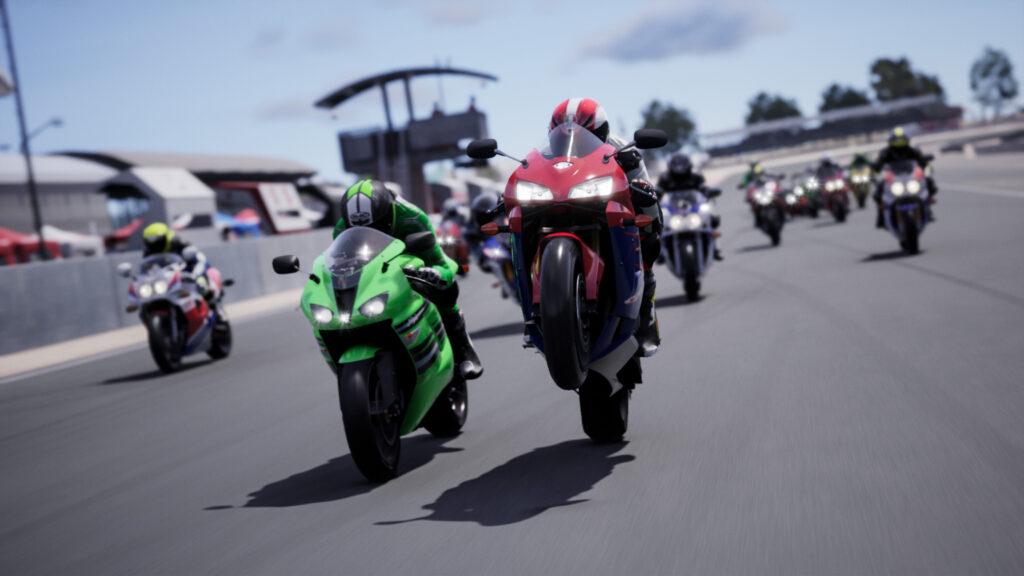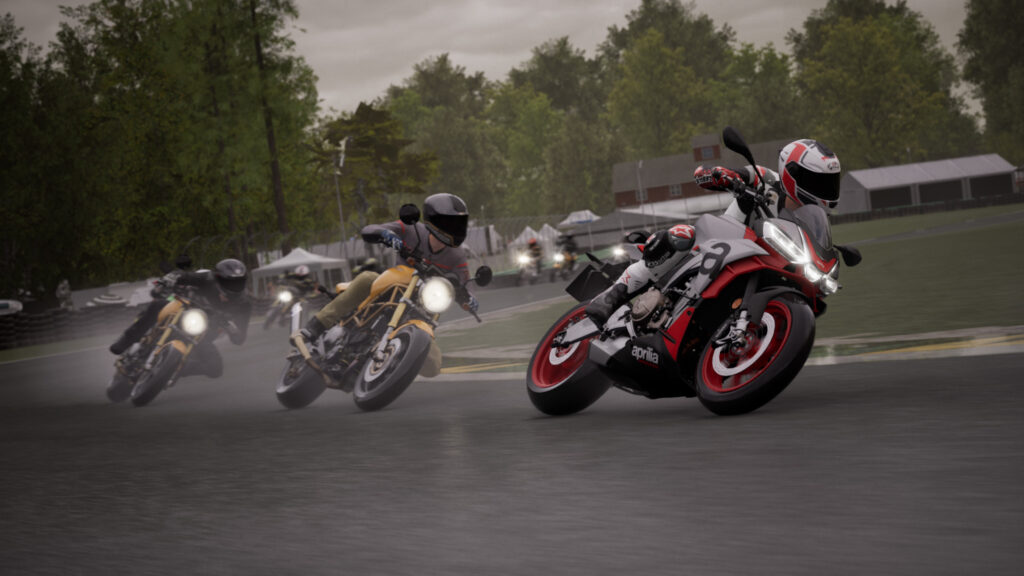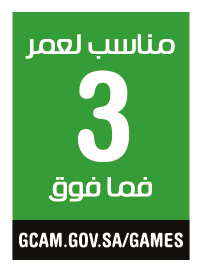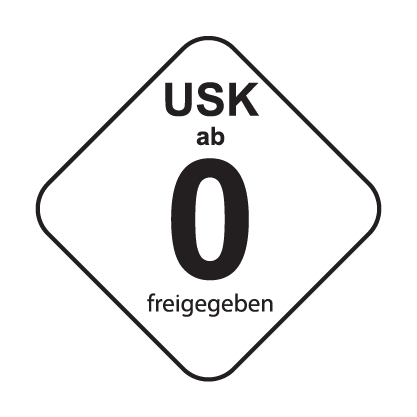I’m a biker, and it’s hard to put into words the feelings I experience when I mount my bike. Even harder is translating that into numbers, into code, and making it possible for anyone to feel those same emotions through their joystick.
And when we talk about bikes, we also have to consider that there is an extra layer of complexity: their physics is more complex to simulate than cars, as motorcycles’ behavior is strictly connected to the interaction with the rider, with his weight and movements, which need to be taken into account.
It was not easy, but with RIDE 5 we managed to capture the sensation of being on a bike like never before, and not only visually. This is the result of a log work that started with the first RIDE, released in 2015; since then, the gameplay physics has constantly evolved, especially when we moved to Unreal Engine, and has become increasingly true to reality.
For example, in RIDE 5 we have refined and evolved a specific mathematical model called Pacejka to best simulate the tire grip. The correct calculation of their physics these days may seem obvious, but in a game like RIDE 5, aiming for maximum realism, you have to calculate how they wear and deform as well, which depends on the temperature of the asphalt and on the riding style. This is obviously linked to the weather as well, which in RIDE 5 is dynamic and, especially in Endurance races, can force a return to the pits to change the tires.
In RIDE 5 no variable is left to chance and a correct simulation of the bike dynamics must make them behave realistically, regardless of whether they are new or historic. To achieve this, we changed the suspension system, and reviewed the chain pull simulation, engine braking, and transmission. We then worked on the brake management, which must be powerful but modulable, so that players can really feel to be in control of their bikes. We also evolved the electronics that now includes TCS, anti-skid, anti-wheelie, ABS, and cornering ABS, as in the most recent real bikes. Finally, compared to RIDE 4, we progressed the calculation of aerodynamic flaps, increasingly present on sports bikes.

Driving a 2023 BMW M 1000 RR or a vintage MV Agusta provides differences not only in performance: the handling changes, as well as the speed at which one bike leans into a turn compared to the other. And since the skills required by two wheels of the past may not be within everyone’s reach, we decided to allow the activation of electronics even on historic motorcycles. A choice to be understood exclusively as a gameplay aid, which purists can disable to experience the thrill of taming temperamental beasts that require great sensitivity.
There is also an important point to discuss regarding the sound of the engines: before, we obtained it by putting the bikes on a dyno, but this way we also recorded the friction of the tires on the rollers, which created background noise. Now we rent a track, place microphones near the exhaust and the engine of the bikes, and record everything, obtaining audio that is also positional, so that with the helmet’s point of view, you hear the exhaust from the side it is located. However, the acquisition of the audio is actually only half the work: it then has to be processed and interpolated to “hook it” to the physics of the game, and obtain results consistent with what players actually do on the track.

At Milestone, we are engineers and riders because we ‘build’ the bikes, bring them to the virtual track, and fine-tune them until we achieve the results we expect. We create digital bikes that provide the same emotions as their real counterparts, and RIDE 5 is the tangible result of our passion and dedication. It combines the thrill of riding a real bike with the accessibility of a video game experience, and we are proud to offer motorcycle enthusiasts a unique and immersive experience, which will bring them as close as possible to the real sensation of riding a bike.









